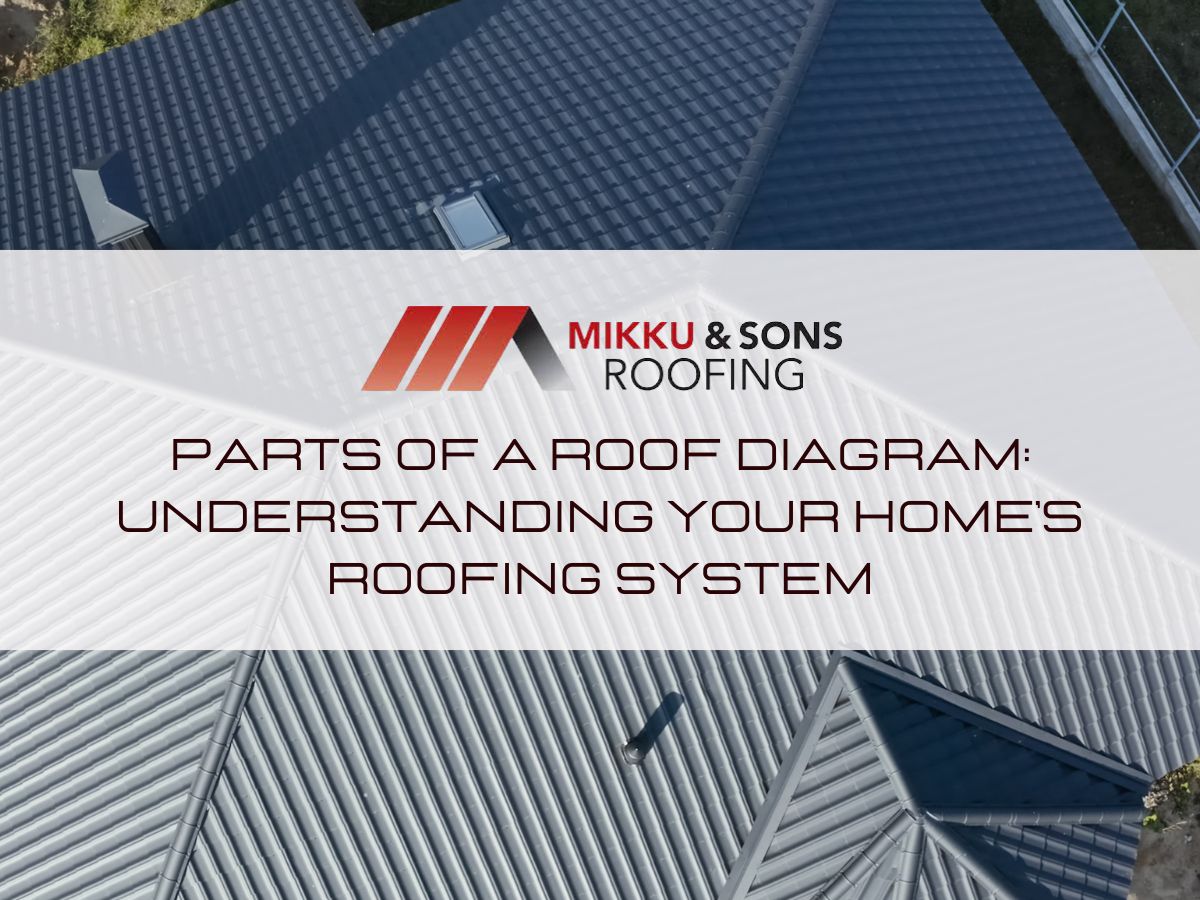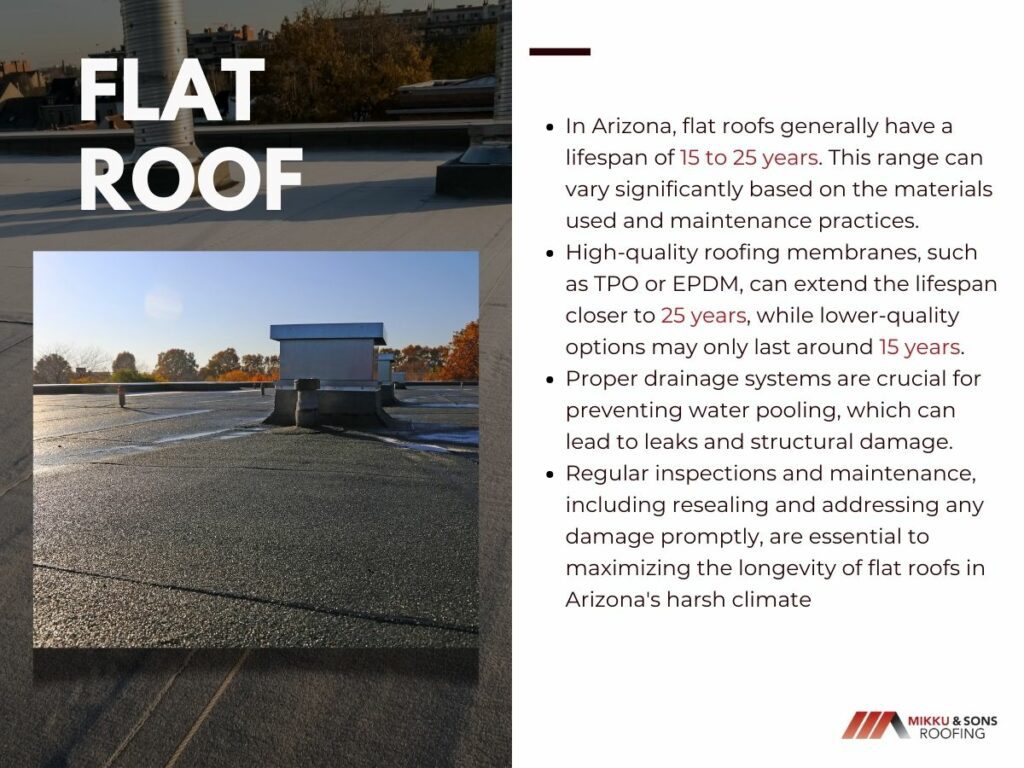

In Arizona, the lifespan of a roof is significantly influenced by the type of roofing material used and the extreme environmental conditions prevalent in the region. Homeowners can expect a range of durability, with roofs typically lasting from 20 to 50 years.
For instance, tile roofs, made from clay or concrete, often last between 40 to 50 years, while asphalt shingle roofs have a lifespan of 20 to 30 years depending on quality and maintenance. Additionally, factors such as installation quality and regular upkeep play crucial roles in maximizing a roof's longevity, particularly in the face of Arizona's intense sun and seasonal monsoons. How long does a roof usually last in Arizona?
A roof’s lifespan depends on multiple factors, including material type, installation quality, maintenance practices, and environmental conditions. Arizona’s unique climate plays a significant role in the longevity of roofing materials, as extreme temperatures and intense sunlight can accelerate wear.
The type of roofing material greatly impacts how long a roof will last. In Arizona, common roofing materials include tile, asphalt shingles, and foam. Tile roofs are popular for their durability in hot climates, often lasting 30 to 50 years or more, as they withstand intense heat and offer UV resistance. Asphalt shingles, while more affordable, typically last between 15 to 20 years, as they are more susceptible to sun and heat damage.
Foam roofs, often used on flat roofs, have a lifespan of around 15 to 25 years, although regular re-coating can extend their durability. Metal roofs are also growing in popularity in Arizona due to their heat resistance and longevity, lasting 40 years or more with proper care.
Proper installation is crucial for maximizing roof longevity, regardless of the material. Poor installation can lead to issues such as leaks, uneven wear, and premature degradation. Choosing a qualified roofing contractor who understands the demands of Arizona’s climate is essential.
Roofs installed with high-quality materials, correct techniques, and attention to detail are less likely to suffer from structural issues over time, which can contribute to a longer lifespan.
Regular maintenance is a key factor in extending the life of a roof. Routine inspections, especially after monsoon storms, can catch minor problems before they escalate. Simple tasks like clearing debris, checking for damaged tiles or shingles, and ensuring proper drainage are vital in preventing issues that may otherwise shorten the roof’s lifespan.
Arizona’s climate can lead to rapid degradation without maintenance, particularly in areas exposed to constant sun and wind. Regular maintenance helps identify and address issues early, preventing costly repairs and extending the roof’s service life.
Arizona’s intense sun, high temperatures, and occasional monsoon storms create a challenging environment for roofs. The sun’s UV rays can weaken materials, while drastic temperature fluctuations lead to expansion and contraction, which may cause cracking over time.
Monsoon season, with its high winds and heavy rainfall, adds stress to roofing structures, making them susceptible to damage if not adequately maintained. While Arizona doesn’t experience heavy snowfall, hail and sandstorms in desert areas can cause abrasions and damage to roof surfaces.
In Arizona's hot, dry climate, your roof's lifespan can vary significantly based on the roofing material, quality of installation, and maintenance practices. This guide breaks down the typical lifespans of popular roofing materials in Arizona and highlights factors unique to the area that may impact longevity.
Tile roofs, often made from clay or concrete, are known for their durability and resilience, especially in Arizona's intense sun. Clay and concrete tiles are particularly well-suited for Arizona, as they withstand the heat without significant deterioration. The typical lifespan for tile roofs ranges from 40 to 50 years, but with proper care, they can last even longer—up to 100 years in some cases.
However, one maintenance consideration for tile roofs is underlayment replacement. While tiles themselves resist wear and sun damage, the underlayment beneath them does not last as long. Underlayment generally needs replacement every 10 to 20 years, depending on the specific materials and exposure to the elements.
Replacing this protective layer ensures water tightness and prevents leaks, which is essential in Arizona, where monsoon rains can test roof integrity. Regular inspections and proactive underlayment replacement will keep tile roofs performing well and add decades to their lifespan.

Shingle roofs are widely used across Arizona, with an average lifespan of 20 to 50 years, though quality and installation play a crucial role. Asphalt shingles can come in a range of quality levels, with architectural shingles typically offering a longer lifespan than three-tab shingles.
In Arizona, exposure to high UV levels can accelerate the aging process of shingle roofs, especially if the shingles are of lower quality. UV radiation can cause shingles to dry out, crack, or even curl over time, so investing in UV-resistant shingles can extend their lifespan.
Homeowners can maximize their shingle roof's life by choosing high-quality shingles and ensuring proper installation by a reputable roofing contractor. Regular inspections and maintenance, such as removing debris and clearing gutters, can also make a difference, preventing minor issues from becoming costly repairs.

Metal roofs are becoming increasingly popular in Arizona due to their durability and energy efficiency. With lifespans ranging from 40 to 70 years, metal roofs stand up well to the heat and require minimal maintenance. Their reflective properties help keep homes cooler by deflecting the sun’s rays, reducing the cooling load on air conditioning systems, and contributing to overall energy savings.
One of the advantages of metal roofs is their resistance to cracking and corrosion, though high-quality coatings are recommended to prevent rust. In Arizona, this means they can weather extreme temperatures and occasional heavy rains with ease. To ensure longevity, homeowners may consider periodic inspections for signs of rust or surface damage and address these issues promptly.

Flat roofs are commonly found on commercial properties and some residential structures in Arizona. These roofs typically last between 15 and 25 years, with materials like EPDM, TPO, and modified bitumen offering various benefits. While Arizona's dry climate may seem ideal for flat roofs, proper drainage is essential to prevent standing water, especially during monsoon season.
The material choice directly impacts the lifespan of a flat roof. EPDM (a synthetic rubber) can last around 15 to 20 years, while TPO (a type of plastic) may last closer to 25 years if maintained properly. Regular maintenance, including checking for cracks, blisters, or pooling water, can help extend the lifespan of a flat roof in Arizona’s challenging climate.

Foam roofs are an increasingly popular choice in Arizona due to their insulation properties and ease of installation. With a lifespan of about 20 to 30 years, foam roofs are a great option for both energy efficiency and cost-effectiveness. However, achieving a long lifespan depends significantly on the quality of the application. Proper installation and regular re-coating are essential for foam roofs, as they are susceptible to UV damage and surface degradation over time.
For optimal performance, foam roofs should be inspected every few years, with re-coating typically required every 5 to 7 years. By maintaining this protective layer, homeowners can ensure that the foam remains intact, providing effective insulation and a watertight barrier for years to come.

In Arizona, climate conditions like extreme temperatures, high UV exposure, and monsoon rains can all affect a roof’s lifespan. Here’s how these factors influence roof longevity:
Regardless of the roofing material, regular maintenance is crucial to extending a roof’s lifespan in Arizona. Some simple steps include:
Understanding the lifespan of roofs in Arizona is crucial for homeowners looking to protect their investments. With varying lifespans depending on materials and maintenance, it's clear that the right choice can significantly impact durability and performance.
As we transition into choosing the right roofing material for Arizona homes, it's essential to consider not only longevity but also how different materials withstand the state's unique climate challenges. From the intense heat to monsoon rains, selecting a roofing system that offers resilience and efficiency is key. Let's explore the best options available for Arizona homeowners to ensure lasting protection and value.
